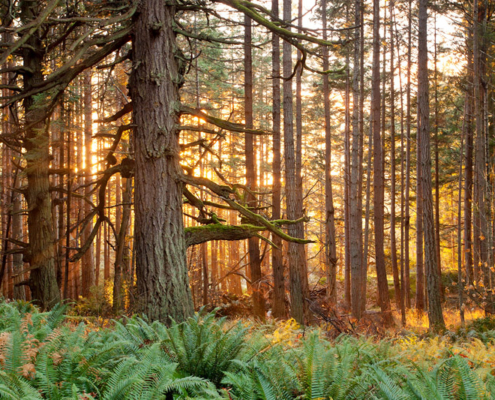
Ancient Forest Alliance supports BC government’s proposal to expand Coastal Douglas-Fir ecosystem protection
The Ancient Forest Alliance commends the BC government and Ministry of Forests on their proposal to increase the amount of Coastal Douglas-Fir ecosystem protected on public (Crown) lands on Vancouver Island’s southeast coast and the southern Gulf Islands.The proposed new protected areas total 1,125 hectares and expand upon a similar process in 2010 that resulted in the issuance of similar land use orders which protected 2,024 hectares of public lands on southeast Vancouver Island and the Sunshine Coast.
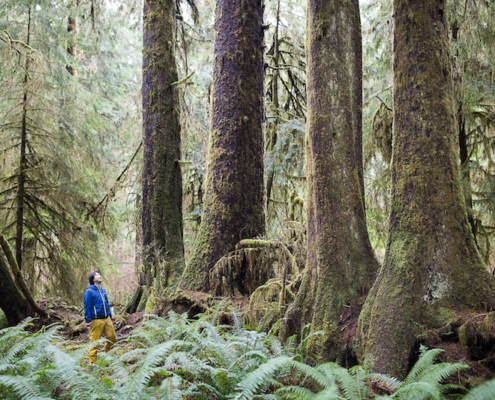
Forest advocacy group discovers grove of giant Sitka spruce trees on Vancouver Island
Here is a recent Globe and Mail article about the ancient Sitka spruce grove that we located recently near Port Renfrew in Pacheedaht territory. The grove includes a huge, 11 foot wide Sitka spruce that is wider than the 10th widest spruce (the Carmanah Giant) listed on the BC Big Tree Registry.
TimberWest Corp. is quoted, saying they have classified the area for conservation purposes for now within their private lands inventory. This should make it easier at some point for the land to be purchased - ideally by the province - as an ecological reserve or conservancy, as public protection is a far greater guarantee for the area's future security than a voluntary designation under the private ownership of a timber corporation.
Ancient Forest Alliance campaigners found the grove earlier this month and identified it as a significant old-growth site of high conservation value. People would have traversed, lived in, and hunted throughout the area for thousands of years, and early loggers had cut in the vicinity all around the grove a century earlier, but luckily left several relatively limited clusters of giant ancient spruce here.
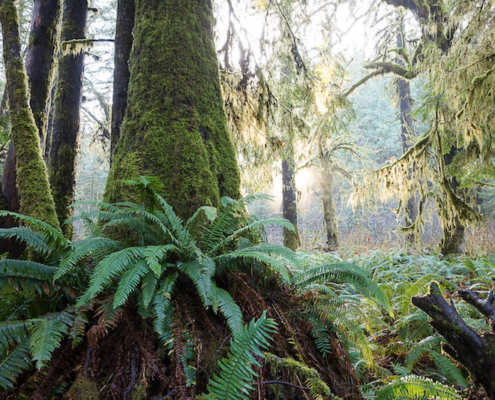
Towering near-record Sitka spruce located near Port Renfrew
Check out this new article in CHEK News about FernGully Grove: Port Renfrew is billed as Canada’s Tall Tree Capital, and the latest find is helping to enforce the nickname. The Ancient Forest Alliance (AFA) says they located an 11-foot diameter Sitka spruce tree that is the tenth widest Sitka spruce in Canada, according to the BC Big Tree Registry. AFA says they found the massive tree in one of the last unprotected stands of old-growth Sitka spruce groves on Vancouver Island, nicknamed FernGully Grove, near Port Renfrew.

Massive near-record Sitka spruce tree found on Vancouver Island
Here's a Vancouver Sun article about FernGully Grove - a spectacular grove of giant spruce that we located near Port Renfrew in Pacheedaht territory last week - saying: A forest advocacy group says it has discovered an unprotected old-growth forest that is home to a near-record sized Sitka spruce tree on Vancouver Island. The Ancient Forest Alliance says the 3.3-metre wide tree was found on lands owned by TimberWest Corporation, near the town of Port Renfrew, also known as Canada’s tall tree capital. AFA executive director Ken Wu says the area, which they have nicknamed FernGully Grove, is also home to dozens of one to two metre wide trees, giant sword ferns, and is the habitat for elk, deer, wolves, cougars and black bears. He says the grove “needs to be bought and protected by the province.”

Magnificent Old-Growth Forest found on Vancouver Island; 11 foot wide, near-record size Sitka spruce towers in “FernGully Grove”
The Ancient Forest Alliance has located one of the finest and last unprotected stands of old-growth Sitka spruce groves on Vancouver Island, located near Port Renfrew. Nicknamed the “FernGully Grove” for its dense and extensive understory of ferns, it is located on lands owned by TimberWest corporation, in the territory of the Pacheedaht First Nation people, and is just a 10 minute drive from the town of Port Renfrew – a town that has been billed as the “Tall Tree Capital of Canada.”
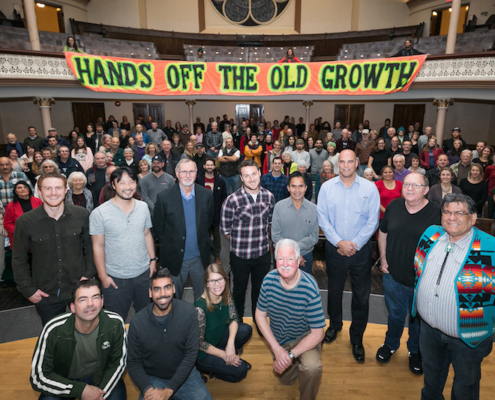
Groups demand protection of Island’s old-growth forests
Check out this new article in the Sooke News Mirror on BC's old-growth forest policies. BC's Premier John Horgan's quote is significant and provides some hope: "We’ve long agreed with these campaigners more needs to be done to protect the health of our vital forests, which for 16 years were left degraded by the B.C. Liberal government."
Click below to read the rest!
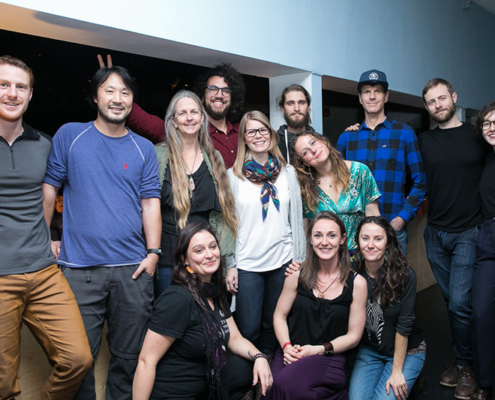
THANK YOU to Everyone Who Helped Make Our Year-End Celebration a Success!
The Ancient Forest Alliance would like to send a major THANK YOU to everyone who helped make our Year-End Celebration on November 25th a great success! The night was filled with great energy, socializing, music, food, and dancing. More than 150 people filled the Victoria Event Centre to its capacity. Excitingly, we raised over $5000! A large portion of our proceeds resulted from the silent auction items that were generously donated by a variety of businesses and artists. We would also like Social Coast for helping to organize the event, Oliver Swain for his live performance, and C-Frets, DJ Rich Nines and Taquito Jalepeno for their time donated to the turn-tables. Without the support of everyone involved, we could not have pulled off such an enjoyable and successful evening. Thank you again.
Please click below to view the full list of our business supporters and sponsors.
